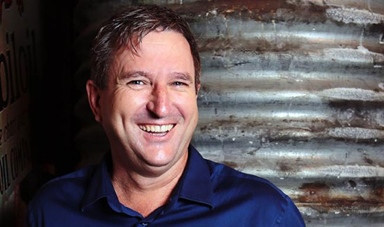At a glance
At the head office of Bundaberg Brewed Drinks in the city of Bundaberg, about 360km north of Brisbane, there’s a competition going on.
Inside the barrel-shaped shop and adjoining brewery, where Bundaberg’s iconic ginger beer and 11 other flavours are made, a tug of war is happening between domestic and international sales.
Of the company’s 250 employees, just 34 are involved in the overseas accounts, suggesting there’s only likely to be one winner.
Yet a huge upsurge in the popularity of Bundaberg soft drinks in countries such as the US, South Korea, Germany and China means the international team more than pulls its weight.
Offshore sales currently make up 35 per cent of Bundaberg’s total market, and are soon expected to outstrip domestic sales.
“We actually know the date in our heads when international will be bigger than domestic,” says Bundaberg Brewed Drinks CEO John McLean.
“It’s a really good competition internally. It gives the domestic people the chance to push the date out and our international people the opportunity to bring it in.”
In the US, Bundaberg now moves about 24 million bottles a year, up from the 150,000 units when it first entered the market in 1997. McLean says it’s not unusual to see 100 per cent growth every 12 months.
While lucky timing has played its part – the Moscow Mule has become a hugely popular cocktail on California’s bar scene and Bundaberg’s ginger beer is seen as its perfect mixer – there’s been plenty of hard work and strategy to go with it.
McLean, who became CEO in 2007, started with the company in 1995. He had married Rae-Lee Fleming, a granddaughter of the company’s founders, and was asked to join the family business by his father-in-law, Bundaberg master brewer Cliff Fleming.
The business started by the Fleming family brewed its first ginger beer in Bundaberg back in 1960, and grew to be the local soft-drink maker for the Bundaberg and Maryborough areas.
However, the product evolved under McLean’s watch. In 2010 a new range of Bundaberg-branded flavours including pink grapefruit, guava and blood orange pushed the product up the gourmet food chain.
It helped position the range as a premium product for sophisticated consumers. A non-alcoholic apple cider and traditional lemonade appeared in 2014.
McLean explains that initially Bundaberg was shipping from its warehouse to international distributors and simply hoping for the best.
“We changed our focus from being an export business to being an international business and, over the last seven years, we have really focused on that,” he says.
“It’s not just simply moving the product across the road or across the sea, but how do we help our partner in that country and help them sell that product and sell more.”
That meant taking control of international marketing, trading in the local currency to have a better handle on the foreign exchange risks, and focusing on the distribution points.
In 2012, for example, Bundaberg Brewed Drinks began to be stocked in Costco in the US.
Bundaberg’s US success has segued into a broader international push for the company. From some small sales to New Zealand 30 years ago, Bundaberg now sells its drinks in 44 countries.
Solid markets in China, Germany, the UK and South Korea helped push its worldwide sales to A$117 million in 2016.
Different laws, social norms and local preferences mean there’s fine-tuning in every market. For example, the term ginger “beer” can’t be used in Arabic countries and Germany.
In South Korea, Bundaberg moves as much of its lemon, lime and bitters flavour as it does ginger beer; in Germany, it can’t seem to shift its root beer (sarsaparilla) at all. For McLean, it becomes about knowing and adjusting to the market.
It’s all adding up to increased international success, and the day when international sales overtake domestic sales is drawing nigh. For now, McLean is keeping details of that particular breakthrough in house.
“It’s closer than a few years but more than one,” he says.
One piece of advice
“Don’t put up a for-sale sign in front of your house until you build it. Essentially, there is no point in doing a whole lot of marketing for your product if there are no sales.” John McLean

